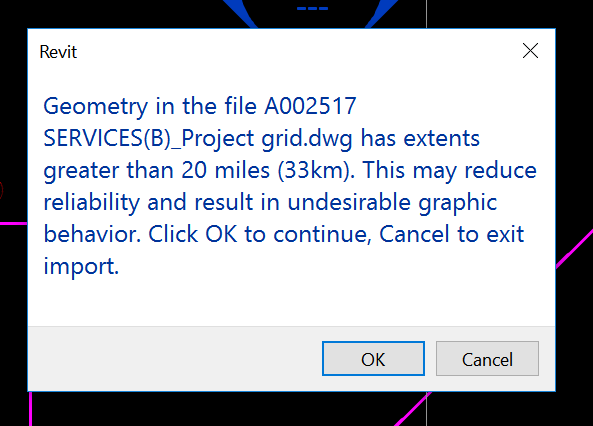

Anything over this limit would cause errors in graphical display.

If you are importing Site Plan information, this is often located a large distance from the 0,0 origin. Finally you need to consider the coordinates of the CAD Data.Purge, Delete, Bind any Xref information in the CAD file and Audit it.Use the OVERKILL command in AutoCAD to remove duplicate lines (thanks for this tip J).If you are using an OS Plan to trace the outline of a house, don’t load in half of London! Similarly, if you only need the building outline, dont load in all the spot levels, hatching etc which will really slow down the performance of your model. Clean up the copy to make sure you are only linking in ‘the information you need’ i.e.When you then insert the newly creates smaller DWG file into Revit it shows fine without any jagged lines. So the only way to reduce the DWG area was to open an empty DWG file and copy and paste the needed information into this new drawing. Scaling for Imported CAD Files For imported DWG and DXF files, you can specify the units of measure for the imported geometry, and define a. They are all contained inside an element called an import symbol. Its also good to be able to see and manage all linked information from one folder location. When you insert the autocad drawing into Revit, make sure you bring in the appropriate layers (obviously those with 'z' info are most important), select the appropriate import units (don't trust the maker of the autocad drawing to have set it correctly), select centre to centre is usually best to avoid out of limits errors and, most importantly. Trying to delete these other objects failed as you cannot select them. When you import a drawing into Revit, you are importing all the elements, such as blocks and external references (xrefs) from the drawing. 2018 Now one must set the shred coordinates of the Revit file from the. It’s important to do this as you will often need to clean up a sub-consultants drawing and remove unwanted links, blocks etc (and you don’t want to destroy the original file they sent you!). Part I: Importing Survey Data into AutoCAD.



 0 kommentar(er)
0 kommentar(er)
